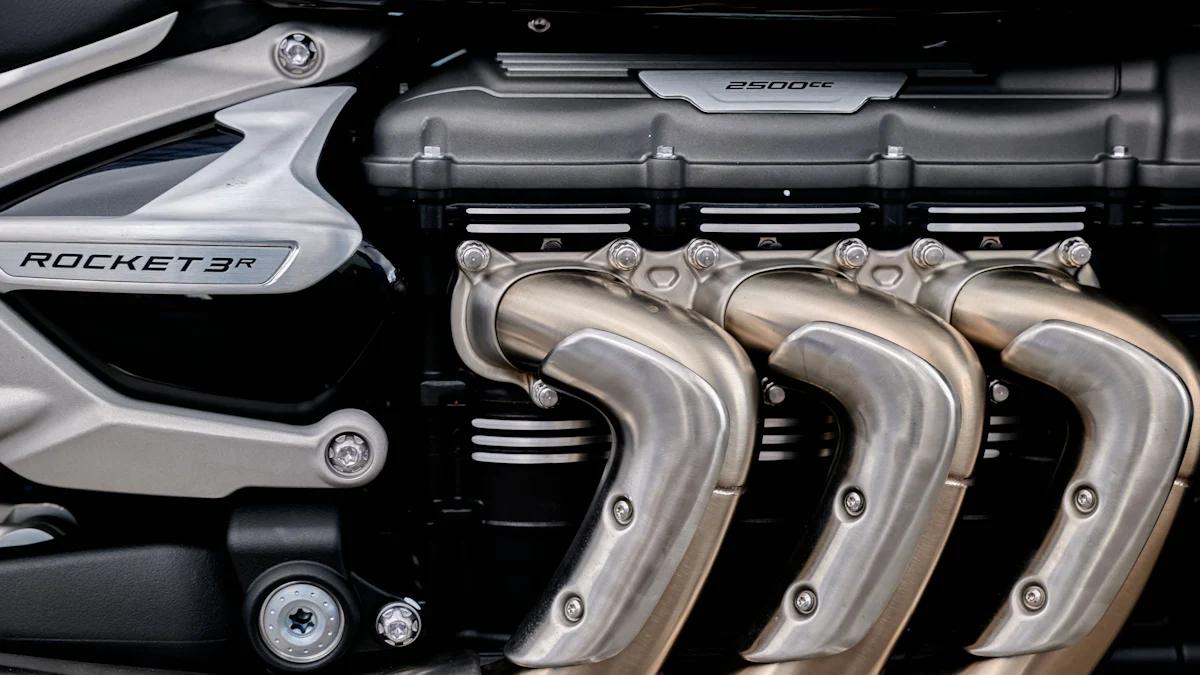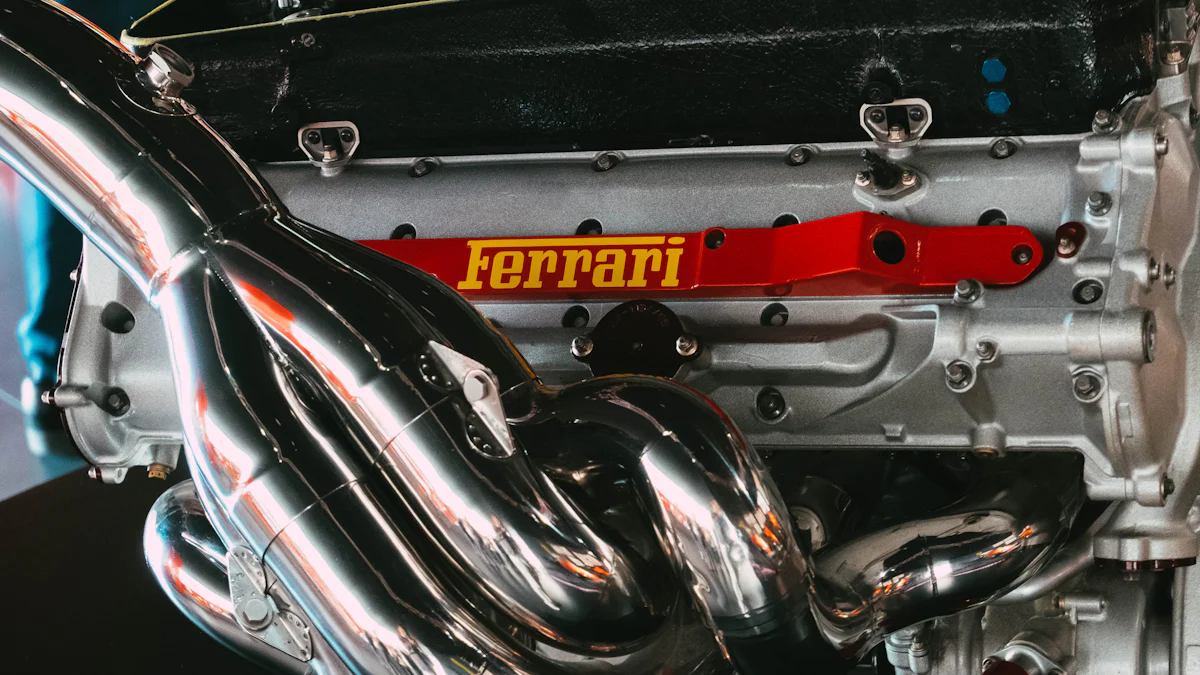
The Trailblazer SS stands as a pinnacle of automotive engineering, embodying power and precision. The Trailblazer SS exhaust manifold within this vehicle serves as a critical component, optimizing engine efficiency by directing exhaust gases for enhanced performance. This guide aims to enlighten readers on the significance of this component and equip them with the knowledge needed to elevate their vehicle’s capabilities through upgrading.
Understanding the Trailblazer SS Exhaust Manifold
When examining the Trailblazer SS exhaust manifold, one can appreciate its intricate design tailored for optimal performance. The exhaust manifold plays a pivotal role in expelling exhaust gases from the engine cylinders, ensuring efficient operation. Typically crafted from durable materials, such as cast iron or stainless steel, these manifolds are engineered to withstand high temperatures and corrosive elements.
Design and Function
Role in the exhaust system
The Trailblazer SS exhaust manifold acts as a conduit, collecting exhaust gases from individual cylinders and channeling them towards the catalytic converter. This process facilitates the expulsion of harmful emissions while maintaining engine efficiency. By optimizing exhaust flow, the manifold contributes to enhanced horsepower and torque output.
Common materials used
Manufacturers often utilize cast iron or stainless steel to construct Performance Exhaust Manifolds due to their robust properties. Cast iron manifolds offer durability and heat resistance, ideal for withstanding extreme operating conditions. On the other hand, stainless steel variants provide superior corrosion resistance and longevity, ensuring prolonged performance benefits.
Stock vs. Aftermarket Manifolds
Performance differences
Stock Trailblazer SS exhaust manifolds are designed to meet basic functionality requirements but may lack the performance enhancements offered by aftermarket counterparts. Aftermarket manifolds are engineered with precision tuning and optimized airflow patterns to maximize engine power output and efficiency.
Cost considerations
When considering upgrading to an aftermarket exhaust manifold, cost becomes a crucial factor for many enthusiasts. While stock manifolds may be more budget-friendly initially, aftermarket options offer superior performance gains that justify their higher price point over time through improved engine responsiveness and overall driving experience.
Benefits of Upgrading Your Exhaust Manifold

Enhancing your vehicle’s exhaust manifold can lead to remarkable improvements in its performance and longevity. The upgrade offers a range of benefits that cater to both power enthusiasts and those seeking durability.
Performance Enhancements
Increased horsepower
- Boosting the engine’s power output through an upgraded trailblazer ss exhaust manifold results in a noticeable increase in horsepower. This enhancement translates to improved acceleration and overall driving dynamics, elevating your on-road experience.
Improved fuel efficiency
- By optimizing the exhaust flow with a high-quality Performance Exhaust Manifold, fuel efficiency is enhanced. The improved combustion process ensures that fuel is utilized more effectively, leading to reduced consumption and cost savings over time.
Longevity and Durability
Resistance to wear and tear
- Upgrading to a durable trailblazer ss exhaust manifold enhances the component’s ability to withstand wear and tear. The robust materials used in aftermarket manifolds ensure longevity, reducing the need for frequent replacements and maintenance.
Enhanced heat management
- An upgraded Performance Exhaust Manifold excels in managing heat generated during combustion. By efficiently dissipating excess heat, the manifold contributes to the overall health of the engine, preventing overheating issues and preserving its lifespan.
Choosing the Right Exhaust Manifold
Material Options
Cast iron
- Cast iron exhaust manifolds offer exceptional durability and heat resistance, making them a reliable choice for high-performance vehicles like the Trailblazer SS. The robust nature of cast iron ensures longevity and optimal performance under extreme operating conditions.
Stainless steel
- Crafted from premium-grade stainless steel, these exhaust manifolds provide superior corrosion resistance and extended lifespan. The use of stainless steel in manufacturing enhances the component’s ability to withstand harsh environments and maintain peak performance over time.
Compatibility with Other Upgrades
Exhaust system
- When selecting an exhaust manifold, compatibility with other upgrades such as the exhaust system is crucial. Ensuring seamless integration between components optimizes overall engine performance and efficiency, resulting in a harmonious upgrade process.
Engine modifications
- Upgrading your Trailblazer SS exhaust manifold should align with any existing or planned engine modifications. Whether enhancing airflow dynamics or increasing power output, selecting a compatible manifold is essential for maximizing the benefits of all upgrades.
Step-by-Step Guide to Upgrading

Preparation
Tools and equipment needed
- Gather a socket wrench set with various sizes to accommodate different bolts.
- Prepare a torque wrench to ensure proper tightening of the manifold bolts.
- Have a gasket scraper on hand to remove any residue from the old manifold.
- Obtain safety gloves and goggles to protect yourself during the upgrade process.
Safety precautions
- Before starting, make sure the vehicle is parked on a flat surface and the engine has cooled down.
- Disconnect the battery to prevent any electrical mishaps while working on the exhaust system.
- Wear appropriate protective gear, including gloves and eye protection, to safeguard against debris and sharp edges.
- Use jack stands or ramps to elevate the vehicle safely for better access to the underside.
Removal of the Old Manifold
Disconnecting components
- Begin by loosening and removing the heat shield covering the exhaust manifold.
- Unbolt the oxygen sensors carefully to avoid damaging these crucial components.
- Loosen the bolts connecting the manifold to the rest of the exhaust system for easy removal.
- Support any attached brackets or hangers before detaching them from the old manifold.
Handling old parts
- Inspect the removed manifold for cracks, leaks, or other signs of damage that necessitate replacement.
- Clean any remaining gasket material or debris from both the cylinder head and exhaust pipes for a smooth installation process.
- Dispose of old parts responsibly according to local regulations or recycling guidelines.
- Keep track of all removed hardware and components for reference during reassembly.
Installation of New Manifold
Aligning and securing new manifold
- Position the new Trailblazer SS exhaust manifold correctly against the cylinder head, ensuring proper alignment with mounting holes.
- Hand-tighten bolts initially before torquing them down sequentially in a crisscross pattern for even pressure distribution.
- Verify that gaskets are correctly seated between mating surfaces to prevent leaks post-installation.
- Double-check alignment and clearance around surrounding components before finalizing bolt tightening.
Reconnecting components
- Reattach any brackets, hangers, or heat shields that were disconnected during removal, ensuring secure fastening.
- Connect oxygen sensors back into their respective ports with care to avoid cross-threading or damaging sensor threads.
- Confirm all connections are tight and secure before lowering your vehicle back onto level ground.
- Start your engine and listen for any unusual noises or exhaust leaks that may require immediate attention.
Post-Installation Checks
Testing for leaks
- Inspect the newly installed Trailblazer SS exhaust manifold meticulously to detect any signs of leakage that could compromise performance.
- Conduct a visual examination around the manifold connections and gaskets, ensuring a snug fit without any visible gaps or irregularities.
- Employ a flashlight to illuminate hard-to-reach areas and verify that no exhaust gases are escaping from the manifold joints.
- Utilize a soapy water solution applied to the manifold seams and connections, observing for bubbles that indicate potential leaks requiring immediate attention.
Performance evaluation
- Initiate the vehicle’s engine post-installation to assess the overall functionality and responsiveness of the upgraded exhaust manifold.
- Listen attentively for any unusual sounds or vibrations that could signify improper installation or leaks within the exhaust system.
- Monitor engine performance indicators such as acceleration, throttle response, and idle smoothness to gauge the impact of the new manifold on driving dynamics.
- Take your Trailblazer SS for a test drive under varying conditions to evaluate how the upgraded exhaust system enhances overall power delivery and fuel efficiency.
- Highlight the manifold upgrade’s performance benefits, including increased horsepower and enhanced fuel efficiency.
- Emphasize the guide’s importance in achieving successful upgrades for Trailblazer SS enthusiasts.
- Invite readers to share their upgrade experiences and stay informed by subscribing for expert automotive tips.
Post time: Jun-24-2024



